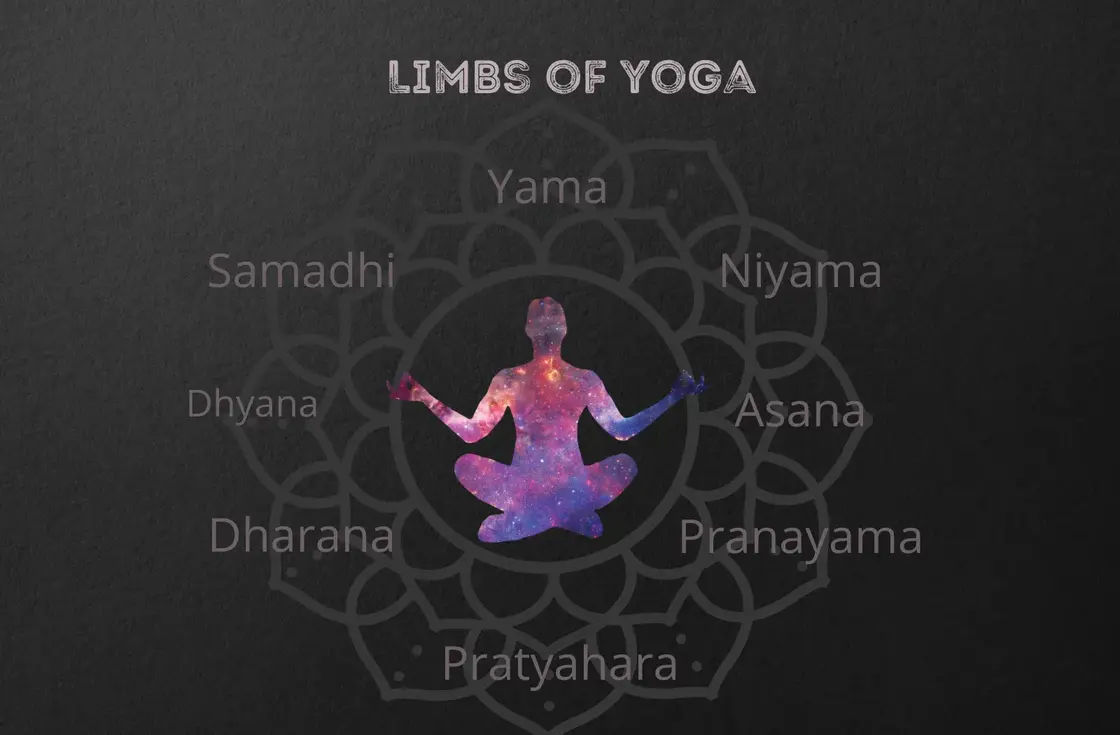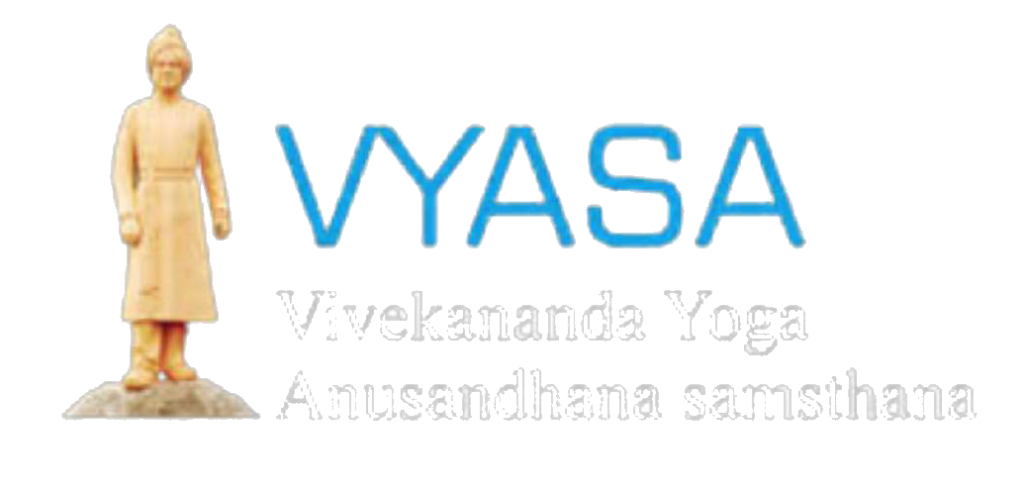Eight limbs of Yoga
By Dr.Shraddha Surathkal | Jun 11, 2022
Eight limbs of yoga are also called “Astanga yoga”. Astanga yoga is divided 2 parts. Bahiranga yoga and Antaranga yoga. Bahiranga yoga is to gain mastery over mind by using indirect techniques and antaranga yoga is to directly handle the mind and gain mastery over it.

Bahiranga yoga consists of Yama, Niyama, Asana, Pranayama and Pratyahara.
- YamaAhimsa (non-violence): is the awareness and practice of non-violence in thought, speech and action. It advocates the practices of compassion, love, understanding, patience, self-love and worthiness.Satya (Truthfulness): Pathanjali describes truthfulness as “To be in harmony with mind, word and action, to conduct speech and mind according to the truth, to express through speech and to retain everything in the intellect that has been seen, understood or heard.” A perfectly truthful person is one who expresses in his speech exactly what he thinks and in the end acts according to it.Asteya (Non-stealing): Is the third constituent of the Yama, which upholds the unauthorized possession of thought, speech and action. In other words, Asteya is just the opposite of covetousness and envy. It advocates the cultivation of a sense of completeness and self-sufficiency in order to progress beyond base cravings.Brahmacarya (Celibacy): The Vedas, Smritis and Puranas, all glorify the fourth constituent of celibacy. Celibacy is believed to be a behavior, which brings man nearer to the divine. This Yama believes in avoiding all sensual pleasures, whether mental, vocal or physical.Aparigraha (Non-Covetousness): The literal meaning of Aparigraha is non-accumulation of worldly objects, caused by covetousness and attachment. The last state of yama is attained when one remains totally detached from sensual pleasures of all kinds and effectively refrains from committing any sort of himsa or violence.
- Niyamas: The Niyamas are the second constituent of Astanga Yoga, which explains how we interact with ourselves, i.e. our internal world.Saucha or purity: Soucha includes both external as well as internal purity. According to the words of sage Manu, water purifies the body and clears the mind; and the soul is purified by knowledge and austerity. It advocates the practice of intellectual purity, purity of speech and of the body.Santhosha or contentment: Describes one should not desire more than what he has earned by his honest hard work. This state of mind is about maintaining equanimity through all that life offers.Tapas or Austerity: Described in yoga philosophy as the power to withstand thirst and hunger, cold and heat, discomfort of place and postures, and ritual feasts. It also specifies that the perfect man is one who practices both mental as well as physical austerity.Swadhyaya or self education: Swadhyaya consists of scriptural studies. The scripture being the Vedas and Upanishads together with recitation of the Gayatri mantra.Ishvara Pranidhana: Is dedication of all our actions, performed either by intellect, speech or body, to the divine. The results of all such actions are therefore dependent upon the divine through dedication, purification, tranquilization and concentration of the mind.
- Asana: Asana is to stay in a position firmly with ease. That's how Patanjali defines it. The purpose of Asana or Yogasana is to use the body to gain health and mastery over the mind. Yogasanas are practiced slowly and the positions are maintained for longer durations. There are three stages in Yogasanas: Sthira, cira and Sukha. Sthira, the first step involves making the asanas more stable. And in this process, there is great effort involved. Cira which is characterized by relaxation. And Sukha is a stage of bliss.
- Pranayama: "tasmin sati svasa prasvasayoh gativicchedah pranayamah" i.e., to cut the speed of inhalation and exhalation is pranayama.Prana is related to breathing and when one starts controlling the breathing rate, he starts with pranayam.The respiratory system acts voluntarily and as well as involuntarily. When it is voluntary in nature the breathing is done according to one's wishes. But when one is not conscious of it, breathing goes on automatically at a particular speed. What one does in pranayama is that he uses the voluntary dimensions to reduce the breathing rate and also balance the breathing between the two nostrils.
- Pratyahara: The importance of Pratyahara is to use the senses to gain mastery over the mind.Pratyahara consists of two words 'Prati' and 'Ahara' meaning denying the senses of their food ,Controlling the senses from moving towards objects and thereby controlling the mind.
- Dharana: Dharana state is when the whole mind focuses on a single point. Initially, everyone goes through a phase where there are several umpteen thoughts floating in the mind. But with concentration it can be reduced to one subject with several thoughts and then can be brought to one subject and to a single thought. This is stage of Dharana. Patanjali says, "Desabandhaschittasya dharana", Which is binding the mind on a single thought.
- Dhyana: The next step to Dharana is dhyana or meditation. If Dharana is focusing, then Dhyana is de-focusing. Patanjali gives us the concept of dhyana as an effortless Dharana. As opposed to focusing under Dhrana, there is total de-focussing under Dhyana effortlessly. This is the seventh limb of patanjali's Astanga Yoga.
- Samadhi: The mind in the grossest form with a host of random thoughts that is brought into a state of dhyana, first by concentration and then Dharana and then by dhyana .From here, one goes to the eight limbs called the Samadhi. Samadhi is a merger. In all our activities there is what is called Trpti-the seer, the seen and seeing i.e. subject, object and the interaction; In meditation, there are three aspects that include who is meditating, the object of meditation and the process of meditation. On the other hand, the culmination of meditation is Samadhi where all the three merge into one.
Article By :
Dr. Shraddha Surathkal



